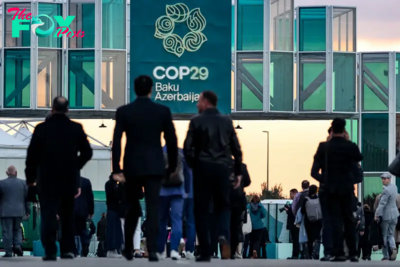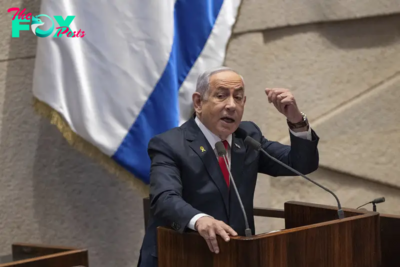World News
Gaza Aid Worker Recounts Bullets Hitting Convoy as Threats Persist After World Central Kitchen Attack
After an Israel airstrike killed World Central Kitchen aid workers in Gaza, drawing worldwide condemnation, international humanitarian agencies say they continue to face violence and practical obstacles trying to deliver aid throughout the famine-threatened territory.
UNICEF spokesperson Tess Ingram tells TIME in a phone call from Rafah on Sunday about a harrowing and unsuccessful attempt to get aid to north Gaza a week after the World Central Kitchen attack. The convoy she was Traveling in, which had coordinated in advance with the Israel Defense Forces, was caught in crossfire while waiting at a checkpoint. Ingram says she doesn’t know who fired the shots, but they seemed to come from the direction of the checkpoint, which she estimates was less than a kilometer (roughly half a mile) away.
The IDF tells TIME in a statement that after an examination, it appears its forces “were not within firing range of the convoy at the time and place indicated and it was found that no fire was carried out at the vehicle by the IDF,” adding “the IDF works in order to prevent harm to humanitarian teams.”
In response, Ingram says “we think it's important that an independent investigation is conducted to shed light on what happened and to ensure that in the future, we've got the necessary security to deliver aid.”
The need is dire. The world’s authority on food insecurity warned last month that one million people face a looming famine in Gaza. The Hamas-run Health ministry reported 28 children have died of malnutrition and dehydration as of April 12.
Despite the needs, more than half of recent requested aid missions to north Gaza were unsuccessful, the U.N. Office for the Coordination of Humanitarian Affairs reported. Between April 6 and 12, Israel facilitated 41% of missions, with 41% denied or impeded including due to hostilities, and 17% canceled by aid groups mainly due to logistical constraints.
Even coordinated missions can be dangerous, with World Central Kitchen saying it coordinated its movements with Israel before the Military attacked its convoy on April 2. The resulting deaths of seven aid workers, which Israel called a “grave mistake,” prompted President Joe Biden to give an ultimatum to Israel––increase food aid into Gaza and take measures to protect civilians or risk losing U.S. support.
Israel in response announced it would open new avenues to allow in more aid. COGAT, the IDF’s humanitarian arm, tells TIME in an email Sunday that more than 1,800 aid trucks entered Gaza last week, compared to 1,327 trucks the week before that. Data from UNRWA, the U.N.’s Palestinian relief agency, shows only a slight uptick (the agency counts trucks differently than COGAT, the Associated Press reported).
Biden said Wednesday that the number of trucks was still “not enough.” On Thursday, Israel opened a new crossing into north Gaza, COGAT tells TIME. “Israel continues its significant efforts to facilitate and alleviate, from its side, the efficient flow of humanitarian aid to the Gaza Strip,” the agency says.
The U.N.’s head has pushed back that “the real problem is that the way Israel is conducting this offensive is creating massive obstacles to the distribution of humanitarian aid,” with bombardment and combat threatening workers. Since the war began on Oct. 7, 217 aid workers have been killed in Gaza, according to the Aid Worker Security Database.
“The increase in aid is not yet tangible, sustained or uninterrupted,” Philippe Lazzarini, Commissioner-General of UNRWA, wrote on X. “Aid also needs to reach safely all those in need.”
Here’s what Ingram tells TIME about the challenges to delivering aid and the needs. The interview has been condensed and edited for clarity.
What happened on Tuesday at the checkpoint?
What happened was we hit the road––we were quite late in getting the green light to leave––we drove up toward the Salah Al-Din checkpoint on the Wadi Gaza line. We were instructed to wait in the designated holding areas for convoys, which is not unusual. While we were in that holding area, we were looking at a mechanical problem in our car, when gunfire broke out.
Do you know what instigated it or where it came from?
I don't know what instigated it. It seemed to come from the direction of the checkpoint, towards the south, and it seems to be towards civilians, or apparent civilians, who then turned and ran in the other direction. I would say I saw a dozen (apparent civilians).
Can you describe the impacts on your convoy from the gunfire?
We were a convoy of three cars and two trucks. Only one vehicle was hit, that was the one I was in. We received three bullets, one in the hood of the car, and two on the door where I was sitting, which was the back passenger door on the right hand side, one in the window and one in the door. My colleague in one of the other cars, he saw bullets ricocheting off the ground. Ahead of us at the holding point there was another U.N. convoy from the World Food Programme and the United Nations Office for Project Services. They had a bullet go through the windshield of their fuel truck.
We’re very fortunate that we were in an armored vehicle…Fortunately, we were unharmed.
What happened after the gunfire ?
We decided that we would continue with the mission. And basically, that just meant continuing to hold until we got the green light. Unfortunately, we held there for at least another two hours. And by that point, it was about 1 p.m., the mission was no longer feasible, because we knew that if we got the green light, we would have still had to make the journey to the checkpoint, through the checkpoint, up north, and we wouldn’t have the time needed to complete the mission. So we decided that we would turn back and try another day.
Today, we had our redo of our mission to the north. It was a 13-hour mission, and almost six of those hours were spent waiting for the green light. We didn't get to complete everything, and that's really disappointing. We were only able to conduct the nutrition and medical aspects of the mission at Kamal Adwan Hospital. We had 45 minutes on the ground at the hospital, that’s it.
We delivered a whole truck of medical and nutrition supplies. It included ready-to-use therapeutic food, which is a treatment for malnutrition, and high energy biscuits.
What did you see people experiencing on the ground in North Gaza?
The level of destruction is mind blowing. It includes the roads, it includes a large percentage of the buildings. There were people on the streets, but we had no issues in terms of mobbing or looting. People were actually waving and smiling at us, which I find so admirable considering that they’ve been through six months of horror and war in the north of Gaza.
(At the hospital) we went to the children's ward and met some mothers and some children. I met three children who suffered from malnutrition––a 35-day-old baby, a two-and-a-half year old, and a seven-year-old. They all had severe acute malnutrition. The mothers were very distressed. The seven-year-old wasn’t able to speak and she was very, very thin. The 35-day-old baby was one and a half kilos (three pounds). The two-year-old was four kilos (nine pounds).
We evacuated that seven-year-old girl from the north to the south, we just dropped her off at a stabilization center in Rafah. Her mom said that they had run out of food and were having to eat animal fodder, and it made her daughter very sick.
What do you think the warring parties and the international agencies involved need to do to ensure more humanitarian aid and also safety for aid workers in Gaza?
We need more crossings open, desperately.
Anything that can be done to improve the coordination process on the ground is really important…Basically, this coordination and decoNFLiction system is not operating properly and there is no reason why it can't. We use this system in other parts of the world…It should be able to work here, it's just not being respected at the moment and we need it to be respected to ensure our safety, but also the safety of the people we serve.
Of course it's dangerous, but to me the delays that we face are such an enormous problem. At the end of the day, our job is to deliver the aid, and it’s the delays that prevent us from delivering the aid.
There's been a lot of conversation lately about the dangers that humanitarian workers face in Gaza, but we’re some of the safest and protected people in the Gaza Strip. The injuries that I have seen in the hospitals are horrific, and particularly in children, with bullet wounds, glass wounds, amputation, broken bones, and so many injuries of war. It’s an important reminder that when we're talking about safety, it's also about the safety of the Palestinian people, including the kids.
-

 World News2d ago
World News2d agoLandmark Bill to Ban Children From Social Media Introduced in Australia’s Parliament
-
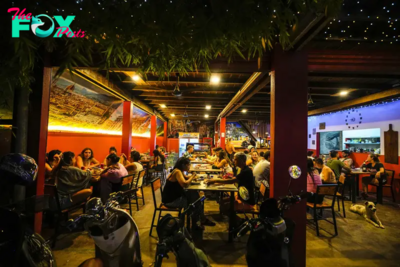
 World News2d ago
World News2d agoAmerican and Australian Tourists Die in Laos After Drinking Tainted Alcohol
-
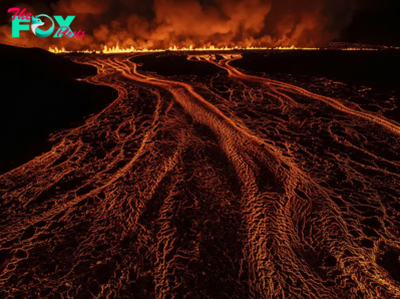
 World News2d ago
World News2d agoSee Photos of the Seventh Volcanic Eruption on Iceland’s Reykjanes Peninsula in 12 Months
-

 World News2d ago
World News2d agoMuhammad Yunus on the Race to Build Bangladesh 2.0
-
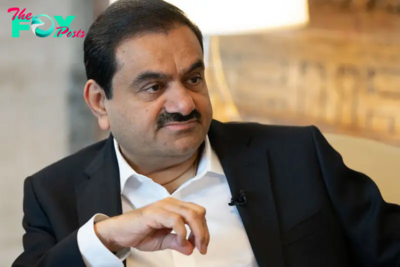
 World News3d ago
World News3d agoU.S. Charges Indian Billionaire Gautam Adani With Defrauding Investors
-

 World News3d ago
World News3d agoU.S. Vetoes U.N. Resolution Demanding a Cease-Fire in Gaza
-
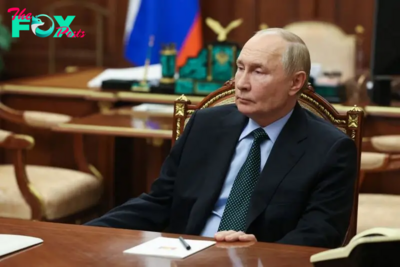
 World News3d ago
World News3d agoPutin Signs New Doctrine Lowering Nuclear Weapons Threshold in Warning to U.S.
-

 World News3d ago
World News3d agoTens of Thousands Rally at New Zealand’s Parliament in Support of Māori Rights




